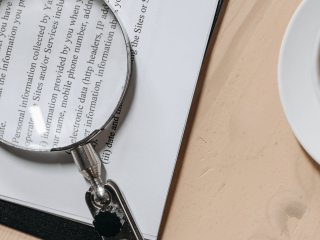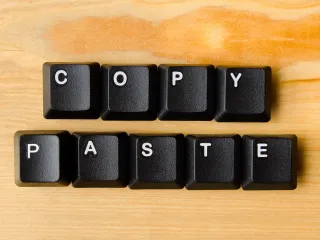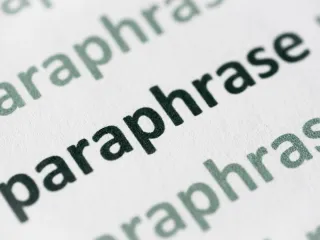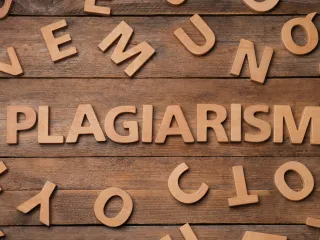How to Beat a Plagiarism Checker – With Tips
We have all been under a time crunch and found ourselves facing a tight deadline. We understand how time-consuming it is to write a paper for class, and how many other things take priority in life. You might not have any brilliant ideas for your paper or have enough time to come up with a topic or overview.
Have you ever wondered how to beat plagiarism checkers? You might have considered grabbing only a few terms and definitions or a short paragraph from a Wikipedia article. However, when you try copying others’ work, you put yourself at risk, and the consequences of plagiarism can be severe.
If you’re in college, you’ll be lucky if your professor only gives you a zero on your paper, as professors can fail you for the entire class or even go so far as to force you out of college. On the other hand, copywriters who plagiarize may end up losing their jobs and even being blacklisted from future gigs.
While you may think you won’t get caught, teachers and professors tend to use anti-plagiarism software to check student work and academic writing during their grading process. These softwares typically return an originality report or similarity report that details what percent of the work is copied from an outside source.
Why Plagiarism is Appealing
Writing student papers can be rather time-consuming. Plagiarism seems like a great idea when you’re in a time crunch because copying the work of an author from his or her websites or books allows you to put your paper together more quickly and easily, while also making you appear thoroughly informed on the topic. We all understand plagiarism is appealing when you’re running out of time.
Yet, plagiarism also negatively impacts the author whose work you’ve decided to steal. Copying the work of artists, researchers, and professional writers means you could steal the money that would go to them when people subscribe to their news source. Even supposedly minor forms of plagiarism, like paraphrasing writers’ ideas without providing proper attribution, replacing words with synonyms, and modifying sentence structures, counts as equally as direct plagiarism with stolen word-for-word quotes.
The most common form of intentional plagiarism is when writers copy words, images, or ideas directly from another person. Some students even go as far as to contract cheating companies to write their essay or research paper for them. Although this may not seem like plagiarism, since the paper produced is still original content, it does count as both cheating and plagiarism because students then put their own name as the author of content they did not actually write themselves.
However, professors, teachers, and even business managers can use anti-plagiarism software tools and plagiarism detectors to catch you in the act. You’ll see the same negative outcomes if you use an essay writing service as if you plagiarized directly from a book or web content. Usually, colleges have a specific protocol for cheating or plagiarizing with the potential to get expelled from school.
How Do Plagiarism Checkers Work?
Before you find out how to beat plagiarism, you’ll need to learn how plagiarism detection works. Plagiarism checkers discover similarities between original sources and published work by using word-matching algorithms. Essentially, the programs work by finding and matching the same or similar words from their database to the student or copywriter content entered into the system.
The plagiarism detection tool then provides a plagiarism report to show whether the original content is copied or plagiarism-free. There is essentially no way for anyone to hack plagiarism checkers because the plagiarism detection software compares your original paper with tens of thousands of websites, word documents, and image searches.
Even paraphrasing your content from a single website won’t work since a plagiarism checker compares the structure of your paragraphs and headings to find similarities with other work. To avoid plagiarism, you’ll need to use your own words and unique headings to describe content from multiple sources.
You should also incorporate some of your ideas into your writing. For example, you can include data you find online in your paper, but you should analyze that data and use it to support your ideas or conclusions. If academic integrity is vital for you, make sure to write an original paper.
At the end of the day, plagiarism checkers will find out whether you’ve copied any information since they find all instances of similarities. Plagiarism reports provide in-depth information about your submitted work, displaying every instance in which you may have copied or paraphrased someone else’s original content. With this impressive technology, you are unlikely to find any loopholes that will help you cheat.
Tips to Avoid Plagiarism
There are a few great options for avoiding plagiarism, such as quoting authors, paraphrasing, and using citation generators to cite your sources and highlight where your information came from. Here are a few ways you can avoid plagiarism:
Paraphrase Others’ Words
One strategy to avoid plagiarism is to paraphrase the words of the original author by employing different language. With the help of proper paraphrasing, you can display your ideas alongside the statistics or facts you’ve gathered. Plagiarism checkers do not consider paraphrasing as plagiarism, and will not flag your paper as a concern to your professor.
However, you’ll need to cite your sources and make sure to use reputable websites from which you gather your information. You should add some of your own wording to make sure your work is original.
The best paraphrasing involves understanding the author’s points in their original paper and then explaining the idea with your own words. The Grammarly app is also great at improving your writing and making sure your grammar is superb when rephrasing others’ ideas.
Use Quotation Marks
Use quotation marks for any specific phrases and terms you find in the original document. Quotes can be useful when the original author comes up with a new phrase or word that may be hard to avoid including in your own paper. Along with quotation marks, don’t forget to cite the source so that you don’t get accused of plagiarism.
Using quotation marks is the best way to show that the specific phrases or content you added are not your thoughts. If you use a direct quote that someone said, make sure to cite who said it and where you got it from.
Use Citations
Any phrases or ideas that you found from another source need a citation. Specifically, if you have any statistics, facts, or research in your paper make sure to cite the original location you got them from. You even have to use citations to cite your own published writings or research reports in any new essay or research paper, or else you’ll be guilty of self-plagiarism.
You’ll always need to cite the work and phrases of other people. Although there are a variety of citation styles, most citations need to have the entire name of the source, the date of publication, the website or journal it came from, and the date you accessed the source. Your professor will let you know whether your work should be submitted in Chicago vs MLA vs APA style.
Put Ideas Into Your Own Words
Think about the topic of your paper. Is it about a famous novel? What are your opinions on the novel or the topic of your essay? Think about your own ideas and present them in the paper. Add a perspective on the topic that doesn’t come from other sources. This is a surefire way to avoid plagiarism.
Use a Plagiarism Checker
It’s not always easy to avoid accidental plagiarism when you use online sources to write your paper. The words or phrases can get into your head and you might accidentally use them in your writing, without realizing that the thought actually came from another author.
If you’re worried that your content may have some accidentally plagiarized text, use a plagiarism checker as a final step after proofreading the essay. This is a fool-proof method of ensuring you did not unintentionally directly copy the work of others before submitting it to a professor.
For example, Quetext’s plagiarism checker can help you quickly review your content to make sure there are no plagiarized phrases in the text. As an added feature, if the system does find any potentially plagiarized content it can immediately insert a citation for the content using the citation generator.
Wrap Up
Plagiarism detection tools cannot be hacked or beaten. Luckily, with the help of Quetext’s plagiarism checker and citation generator, students can avoid plagiarizing by simply and easily citing their essays and research papers. This tool is a great resource to provide students with the peace of mind that they have correctly cited all their sources and are not unintentionally stealing the work of another author.









